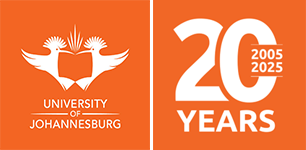About Us
Home » Research » Technology Transfer Office (UJTTO) »The University of Johannesburg’s Technology Transfer Office (UJTTO) is a statutory office of the university, established in terms of the Intellectual Property Rights from Publicly Financed Research and Development (IPR-PFRD) Act 51 of 2008.
The UJTTO is responsible for the management of intellectual property emanating from university research. This is achieved through support given to university-based inventors on aspects of Intellectual Property (IP) management, which ranges from IP identification and disclosure, IP protection, IP strategy development and implementation, as well as the commercialization of products, processes and services through avenues such as licensing and/or the creation of start-up companies.
The UJTTO is mandated to raise awareness and ensure adherence to, or compliance with national regulations, as well as institutional policies.
A key function of the UJTTO is to promote a culture of innovation and entrepreneurship at the University of Johannesburg through several means such as incubation support, innovation competitions and challenges, as well as awareness workshops.
The IPR-PFRD Act No. 51 of 2008 – What is it all about
The scope of the IPR-PFRD Act is “to make provision that Intellectual Property emanating from publicly financed research and development is identified, protected, utilised and commercialised for the benefit of the people of the Republic”.
In Section 1 of the IPR-PFRD Act, the following terms are clearly defined:
- “Intellectual Property” means any creation of the mind that is capable of being protected by law from use by any other person, whether in terms of South African law or foreign intellectual property law, and includes any rights in such creation, but excludes copyrighted works such as a thesis, dissertation, article, handbook or any other publication which, in the ordinary course of business, is associated with conventional academic work.
- ‘‘Intellectual Property creator’’ means the person involved in the conception of intellectual property in terms of this Act and identifiable as such for the purposes of obtaining statutory protection and enforcement of intellectual property rights, where applicable.
The UJTTO therefore assists Intellectual Property creators to protect Intellectual Property through a variety of forms, which could either be registerable or non-registerable.
Registerable IP includes:
PATENTS
It is a right granted by a State (such as South Africa) to an inventor or the applicant or assignee to whom the inventor has assigned his invention, which in this instance will be the University of Johannesburg. The State grants the patent holder exclusive rights for a fixed period of time (20 years), in exchange for full disclosure of the invention.
REGISTERED DESIGNS
Registered design rights offer the creator protection on the physical form of an article. A design registration can be filed on the shape, configuration, ornamentation and pattern for two or more of these purposes. The two types of designs that can be registered are either functional or aesthetic or both. An aesthetic design is granted for 15 years, and a functional design is granted for 10 years.
TRADEMARKS
A trademark is a unique mark that distinguish goods and services from one person to the registered or proposed to be registered marks of the goods and services from another person. Each trademark has to be filed in a specific class or more than one classes depending on the extent of protection required. This right protects against the use of identical or confusingly similar marks. A trademark is renewable after 10 years in perpetuity.
PLANT BREEDERS’ RIGHTS
Plant Breeders’ Rights is a form of protection granted to breeders of new plant varieties. To be granted this right, the plant variety must be new, uniform, distinct and stable. It is possible to have Plant Breeder’s Rights protection as well as patent protection for the same variety. Patents, however, tend to protect components of a variety, such as gene sequences. Protection is granted as 25 years for vines and trees and 20 years in all other cases.
Non-registerable IP includes:
COPYRIGHT
A copyright is an exclusive right granted by law for a limited period to an author, designer, etc. for his/her original work. Once the idea is put into physical form, the work automatically has copyright protection. Copyright does not have to be registered, except for cinematograph films. Work that is eligible for this type of protection includes:
- literary works, including databases;
- musical works;
- artistic works;
- cinematograph films;
- sound recordings;
- broadcasts;
- programme-carrying signals;
- published editions; and
- computer programs.
